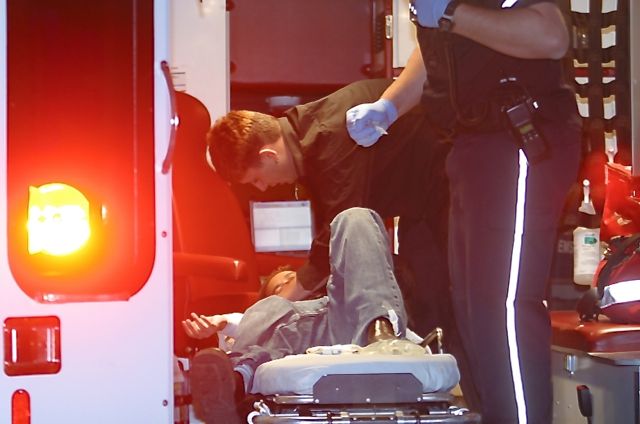Fire safety is election issue

Jun. 2, 2016 PLYMOUTH EAGLE.
Plymouth Michigan News
“Since the departmental downsizing, officials have tried to address staffing shortages and public criticism.”
Don Howard
Staff Writer
The 2012 decision of Plymouth Township officials to cut fire department staffing in half and close the Lake Pointe Fire Station has become an object of heated debate in the current political campaign.
Last week, incumbent Township Supervisor Shannon Price and challenger, State Rep. Kurt Heise, participated in a debate of issues at Praise Baptist Church. One issue the pair argued was the adequacy and effective public safety provided by current staffing at the fire department. At issue is the cost to maintain a fully-staffed department with full-time paramedics and the re-opening of the Lake Pointe station which has been closed for nearly 4 years.
Price told the audience at the debate that he would not lay off any firefighters and wanted to open the Lake Pointe station but believed “…the board of the township spoke very loudly in 2012 and rejected the initiative to open Station 2 by raising taxes, which is easy for some people.”
Records show that in 2012, the trustees refused repeatedly to place the referenced public safety millage on a ballot despite signed petitions from residents. Following lawsuits by a grass-roots public action group, the board members were ordered by a circuit court judge to allow the public to vote on the issue. In response, board members increased the requested 1.0 millage to 10 mills, an amount even the activists were forced to vigorously oppose at the polls.
Price, who has lived in the township less than a year, said he felt there was an alternative to increasing staffing. He said Plymouth should “look to Northville Township. Partnering with Northville Township “would be the right move,” Price said. We’re already working together on mutual aid.”
Northville Township Director of Public Safety John Werth recently confirmed that talks with Price to temporarily utilize the shuttered Lake Pointe station would come to fruition, “sometime in June.”
Werth said that with major road construction work scheduled this year for I-275 and Six Mile Road–the location of the only fire station in Northville Township–Price agreed to his suggestion to rent space and park an ambulance and fire engine at the long-shuttered Station 2 for six months during the construction time.
Werth said that while this would alleviate Northville Township concerns about long response times, especially during rush hour traffic periods, there is no plan in place for Northville to service Lake Pointe residents, except in the dire case of a request for mutual aid.
Heise, who is term-limited in the state Legislature, said he not only wants to permanently re-open Lake Pointe, but also believes the current staffing level of 18 firefighters for a community of 28,000 residents is “very inadequate for a township of our size.”
“If I’m elected, I’ll re-open Station 2 with full-time firefighters because the people of Lake Pointe in the northern corner of the township deserve the same kind of protection that those on the west side have,” Heise said during the debate on the issue.
Heise, a 10-year township resident who in 2012 was not in favor of a dedicated fire millage, told the audience he now feels the cuts made in the past few years have been excessive and he now suspects the action may have been “punitive.”
Heise cited an example of a recent tragedy in Lake Pointe where he said the response time was inadequate. Township Fire Department records obtained with a Freedom of Information Act (FOIA) request show the township rescue squad arrived at the home of an unresponsive male within 10 minutes of the first of four calls to 9-1-1 at the same time as a Huron Valley Ambulance unit arrived.
Few municipal officials actually know exactly how long their emergency crews take to reach cardiac arrest victims because of various methods of reporting and most are selective about how they report that performance. On the subject Lake Pointe rescue, the 10-minute response time, verified by Fire Chief Dan Phillips, was ascertained by starting the clock at the minute and second of the first call until the minute and second the first rescue rig pulled up in front of the home
According to medical experts, a victim experiencing cardiac arrest, also known as ventricular fibrillation, has just 6 minutes to live. A shock with a defibrillator within that time usually will restore the heart’s rhythm and a victim can still survive if qualified paramedics restore his breathing and administer key drugs, such as adrenaline, according to highly experienced paramedics.
Most experts agree that four responders, at least two trained in Advance Life Support and two trained in Basic Life Support, are the minimum required to provide the necessary life saving measures to cardiac arrest victims. Experts say two firefighters to provide CPR, one to prepare the Automated External Defibrillator (AED) and analyze the results of an electrocardiogram (ECG) report, and one to prepare for and initiate advanced cardiac life support measures, such as advanced airway management, I.V. therapy and pharmacological interventions, are the minimum number required to provide the necessary care in a cardiac arrest situation. An important factor in the survival of the patient, experts say, is not only how quickly paramedics arrive at the scene, but also how quickly they begin administering treatment. Recognized national studies predicting cardiac arrest survival rates link response time to the probability of survival. According to the national model, in the best-case scenario a cardiac arrest victim has a 67 percent chance of survival within the critical first 6 minutes.
Price dismissed Heise’s claim of the “inadequate” response time and insisted the 7-minute time was accurate, despite the official records, adding that the patient was transported and expired at the hospital. Price said he attended the funeral.
Price offered another example of the adequacy of fire department staffing, displaying a thank you letter from a resident who Price said, “…was perished for 30 minutes and he’s alive today.” Examination of the rescue run by The Eagle and discussion with Phillips revealed the referenced patient was most likely still breathing when the fire department arrived. Phillips said it was a cardiac event. “We were oxygenating his blood and keeping him alive,” Phillips said, noting it was an extremely unusual situation.
Township trustee candidate Jack Dempsey, who has expressed his concern regarding the fire department staffing levels, said the budget cuts to the fire department show little savings since 2011 when spending was $3.773 million. Dempsey reports 2014 and 2015 fire budgets were $3.771 and $3.829 million respectively. Dempsey said the 2016 budget was not posted on the township website.
Since the departmental downsizing, officials have tried to address staffing shortages and public criticism. The intermittent closing of both the Beck Road and Haggerty Road stations has not been mitigated. Those station closings are necessary when minimum staffing requirements of four firefighters available per shift can not be met by current staffing levels. The department employs only 18 firefighters and a shift consists of a captain, a lieutenant and four firefighters. This does not include the administrative staff that includes Phillips, a fire inspector and a secretary.
Plymouth Voice.


